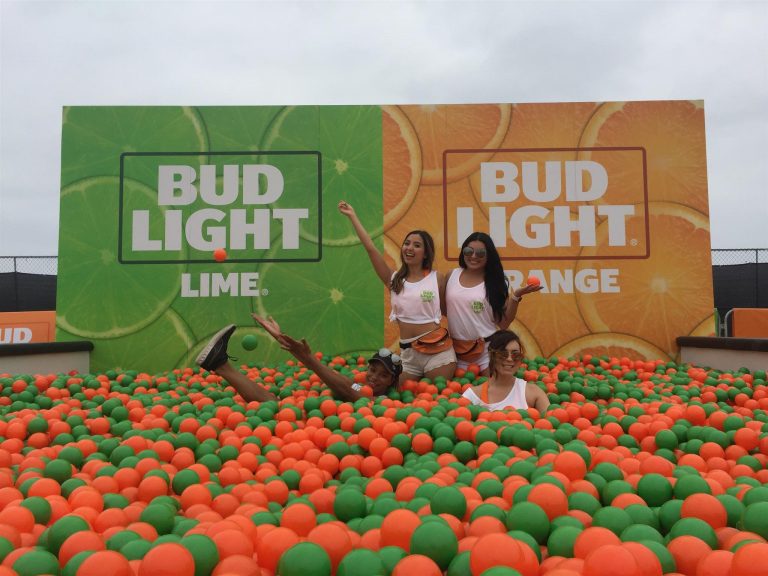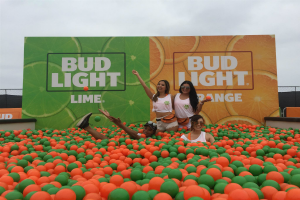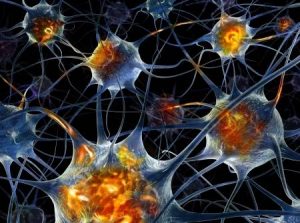08.27.18
By Lisa Major

The alcohol industry, like most industries, has become increasingly competitive as more and more products enter the marketplace. Walk into any liquor store and the options are completely overwhelming. Hundreds of craft beers from around the country, hard cider, spiked sparkling water, it’s a whole new ballgame. And while alcohol brands have relied heavily on promotional events for years to reach consumers and introduce new products, today’s alcohol promotions are much different than those of the past. We lead this week’s edition of Happy Hour with an article featuring a few examples of alcohol brands that are using multisensory experiences to reach consumers. We’re also featuring tips to make your event Insta friendly, how to prove real experiential marketing ROI, and the psychology behind experiential.
“Like all live experiences, active attendee participation is key to impactful spirits sampling events—multisensory engagements are the perfect mixer.” ~Lindsay Hearne
 With more craft breweries, wineries, and boutique style distilleries popping up in just about every city, the alcohol industry is seeing its fair share of competition. In this over-saturated industry, alcohol brands are leaning on live brand experiences to attract consumers, and no, we’re talking about free shots at the local pub. The savviest brands are creating multisensory experiential activations that immerse attendees into their story and culture, leaving guests with a warm and fuzzy feeling. Here, we look at 4 alcohol brands that are utilizing this unique and impactful sampling approach.
With more craft breweries, wineries, and boutique style distilleries popping up in just about every city, the alcohol industry is seeing its fair share of competition. In this over-saturated industry, alcohol brands are leaning on live brand experiences to attract consumers, and no, we’re talking about free shots at the local pub. The savviest brands are creating multisensory experiential activations that immerse attendees into their story and culture, leaving guests with a warm and fuzzy feeling. Here, we look at 4 alcohol brands that are utilizing this unique and impactful sampling approach.
“Experiential marketing won’t deliver the ROI you’re looking for by merely looking innovative and exciting on the surface.” ~Brett Hyman
 Thanks to technological advances, proving experiential marketing ROI has become easier than ever…so we thought. While marketers have definitely made progress when it comes to demonstrating ROI, too often, the metrics that they rely on aren’t telling the whole story. Having hundreds of people gathered around an activation may sound incredible, but as this article points out, “experiential marketing won’t deliver the ROI you’re looking for by merely looking innovative and exciting on the surface.” Instead, the goal should be to not only be impressive but to be impactful, too. Brands need to create deep-rooted connections with consumers that drive conversation and add value. This article covers three tips that will give you a deeper look into event metrics and how to use that data to prove your true return on investment.
Thanks to technological advances, proving experiential marketing ROI has become easier than ever…so we thought. While marketers have definitely made progress when it comes to demonstrating ROI, too often, the metrics that they rely on aren’t telling the whole story. Having hundreds of people gathered around an activation may sound incredible, but as this article points out, “experiential marketing won’t deliver the ROI you’re looking for by merely looking innovative and exciting on the surface.” Instead, the goal should be to not only be impressive but to be impactful, too. Brands need to create deep-rooted connections with consumers that drive conversation and add value. This article covers three tips that will give you a deeper look into event metrics and how to use that data to prove your true return on investment.
“When your brand experience allows your audience to feel something, they’re more engaged and more likely to want to share their experience.” ~dio USA
 Experiential marketing and social media go hand-in-hand. Incorporating shareable content into brand experiences is a great way to increase engagement and reach beyond the physical event space. And with reports proving just how powerful social media is in experiential marketing, most campaigns incorporate some sort of social sharing element. But, what we are also seeing is a focus on jaw-dropping visual designs that are so spectacular, designs that cause people to grab their phone and start sharing without hesitation. With Instagram being strictly a visual platform and the fact that they have 1 billion active monthly users, companies should focus on designing shareworthy Instagrammable experiences to extend their reach. Read on for tips on how to do just that.
Experiential marketing and social media go hand-in-hand. Incorporating shareable content into brand experiences is a great way to increase engagement and reach beyond the physical event space. And with reports proving just how powerful social media is in experiential marketing, most campaigns incorporate some sort of social sharing element. But, what we are also seeing is a focus on jaw-dropping visual designs that are so spectacular, designs that cause people to grab their phone and start sharing without hesitation. With Instagram being strictly a visual platform and the fact that they have 1 billion active monthly users, companies should focus on designing shareworthy Instagrammable experiences to extend their reach. Read on for tips on how to do just that.
“With the right strategy and the right partner, you can build an experiential marketing event that accomplishes your goals and fits your budget.” ~MC 2
 Face it, experiential marketing is here to stay, it’s certainly not going anywhere and if anything, it will continue to grow. The beauty of experiential is that any business can use it, large or small. And while many small businesses are intimidated by the thought of experiential, they don’t have to be. You don’t need a multi-million-dollar budget to execute an event or campaign, like the article above mentioned, it’s not about the impression the event makes, but more about the impact that it makes. When you focus on your target consumer and what they value, it will help you in providing a customer experience that will leave a lasting impression. With the right strategy and the tips found in this article, you can create a successful experiential activation that will deliver results for your brand.
Face it, experiential marketing is here to stay, it’s certainly not going anywhere and if anything, it will continue to grow. The beauty of experiential is that any business can use it, large or small. And while many small businesses are intimidated by the thought of experiential, they don’t have to be. You don’t need a multi-million-dollar budget to execute an event or campaign, like the article above mentioned, it’s not about the impression the event makes, but more about the impact that it makes. When you focus on your target consumer and what they value, it will help you in providing a customer experience that will leave a lasting impression. With the right strategy and the tips found in this article, you can create a successful experiential activation that will deliver results for your brand.
“In the marketing world, it is cliché to say that millennials crave experiences. The truth is, we all do.” ~Matthew Noll
 As experiential marketing grows, we tend to talk about budgets, ROI, technology, and trends. And, we know experiential is powerful, and what makes it powerful, and we have so much data to back all of that up. But, the one thing that is rarely discussed is why it is so powerful. Why are humans drawn to experiences? This article by EMC Outdoors hits the nail on the head as it leads off with this quote by Confucius, that says, “When I hear, I forget. When I see, I remember. When I do, I understand.” This quote embodies everything about why humans crave experiences and better yet, why experiential works so well. Here we take a look at 4 science-based facts surrounding the power of experiential.
As experiential marketing grows, we tend to talk about budgets, ROI, technology, and trends. And, we know experiential is powerful, and what makes it powerful, and we have so much data to back all of that up. But, the one thing that is rarely discussed is why it is so powerful. Why are humans drawn to experiences? This article by EMC Outdoors hits the nail on the head as it leads off with this quote by Confucius, that says, “When I hear, I forget. When I see, I remember. When I do, I understand.” This quote embodies everything about why humans crave experiences and better yet, why experiential works so well. Here we take a look at 4 science-based facts surrounding the power of experiential.